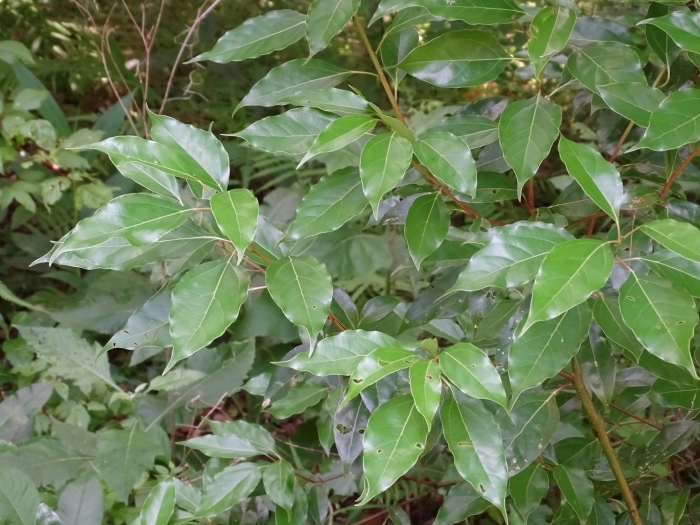Camphor Tree
(Cinnamomum camphora)
Camphor Tree (Cinnamomum camphora)
/
/

Michael W Belitz
Public Domain











































































Estimated Native Range
Summary
The camphor tree is valued for its aromatic leaves and wood, which are used to produce camphor oil. It is often planted as a shade tree in parks and large gardens due to its broad canopy and evergreen foliage. The tree is adaptable to a range of soil types, provided they are well-drained, and it thrives in full sun to part shade. While it is drought-tolerant once established, it benefits from medium amounts of water during dry periods. However, gardeners should be cautious as Cinnamomum camphora can become invasive outside its native range, and it is considered a weed in parts of Australia and the southern United States.CC BY-SA 4.0
Plant Description
- Plant Type: Tree
- Height: 50-65 feet
- Width: 50-60 feet
- Growth Rate: Moderate
- Flower Color: N/A
- Flowering Season: Spring, Summer
- Leaf Retention: Evergreen
Growth Requirements
- Sun: Full Sun, Part Shade
- Water: Medium
- Drainage: Fast, Medium, Slow
Common Uses
Bird Garden, Edible*Disclaimer: Easyscape's listed plant edibility is for informational use. Always verify the safety and proper identification of any plant before consumption., Fire Resistant, Fragrant
Natural Habitat
native to moist forests, grasslands, and along riverbanks in Southeast Asia, including China, Taiwan, Japan, and Korea
Other Names
Common Names: Camphor Laurel , Camphorwood , Kamferträd , 녹나무 , Alcanfor , Camphrier , Kampferbaum
Scientific Names: Cinnamomum camphora , Camphora officinarum , Camphora officinalis , Cinnamomum camphora var. nominale , Laurus camphora , Cinnamomum nominale , Cinnamomum simondii , Cinnamomum camphora f. linaloolifera , Cinnamomum camphora var. glaucescens , Cinnamomum camphora var. rotundifolia
GBIF Accepted Name: Cinnamomum camphora (L.) J.Presl